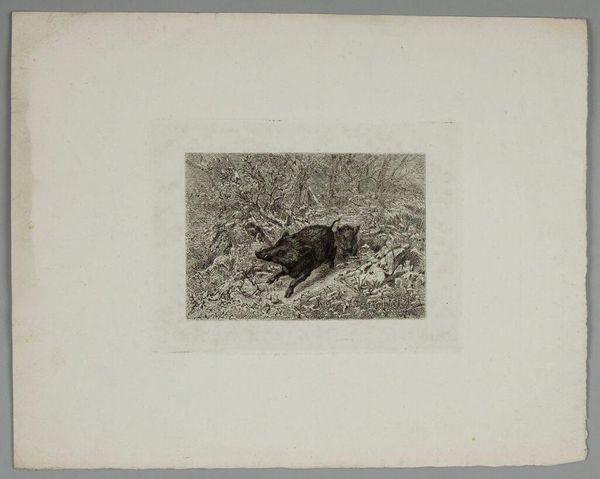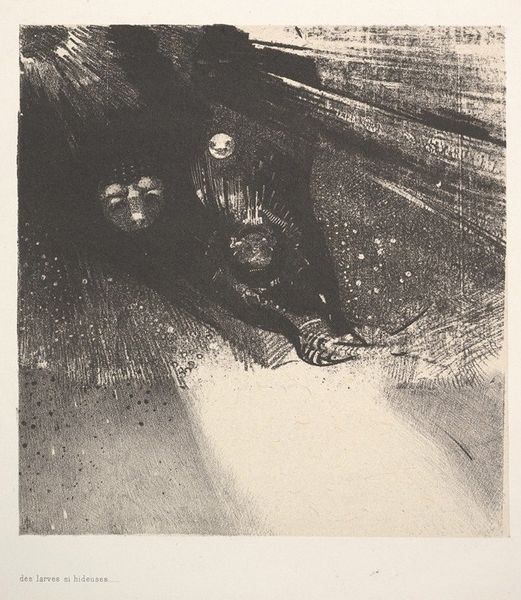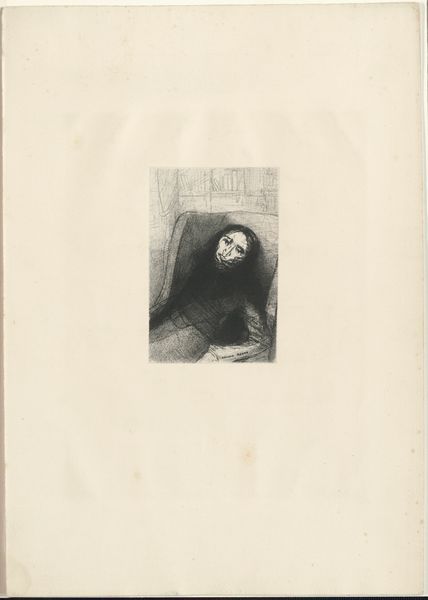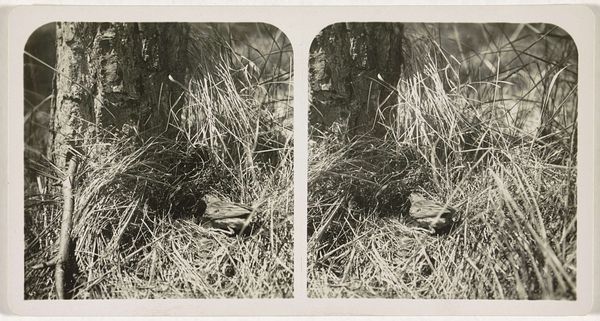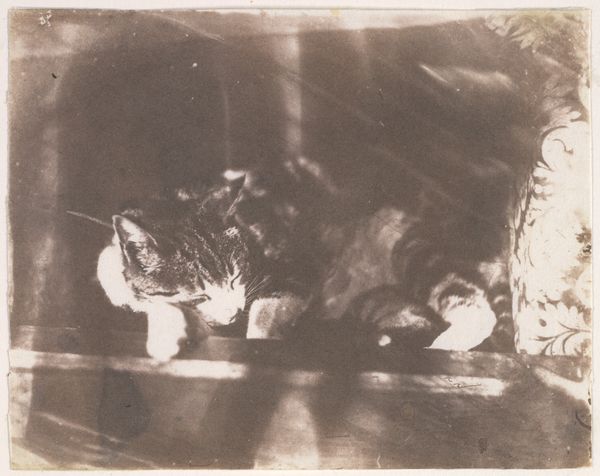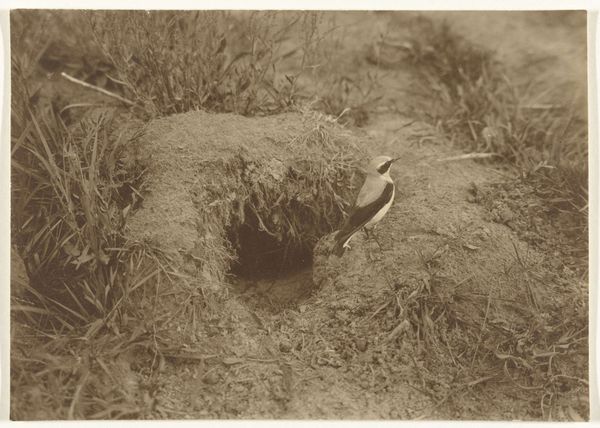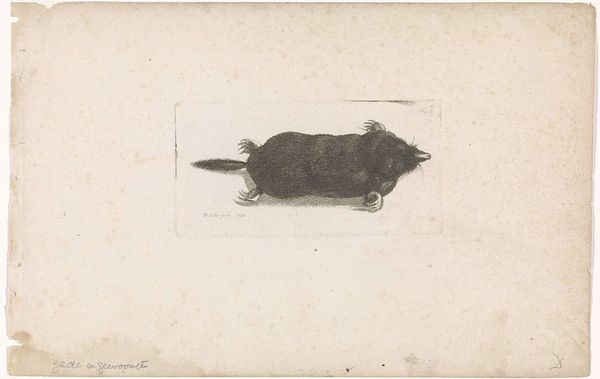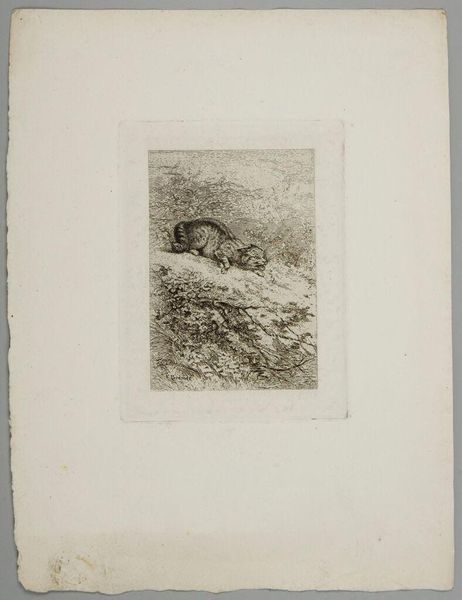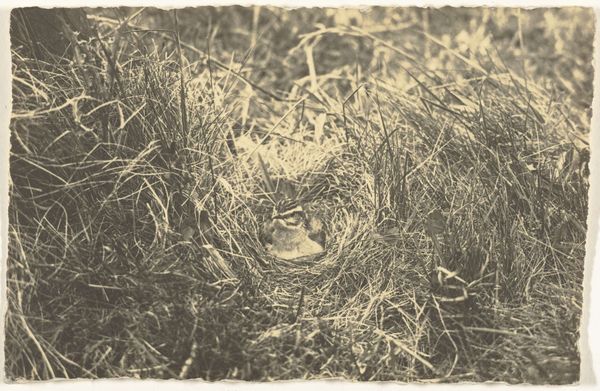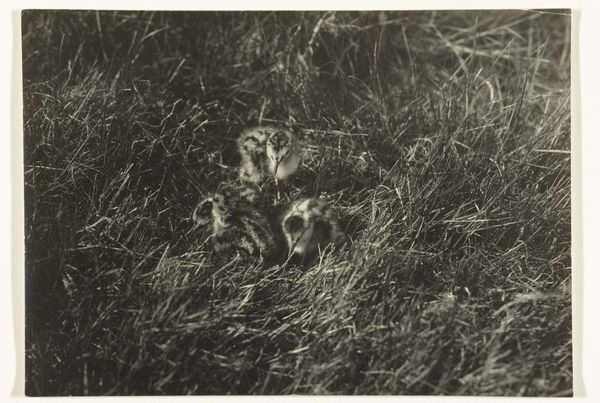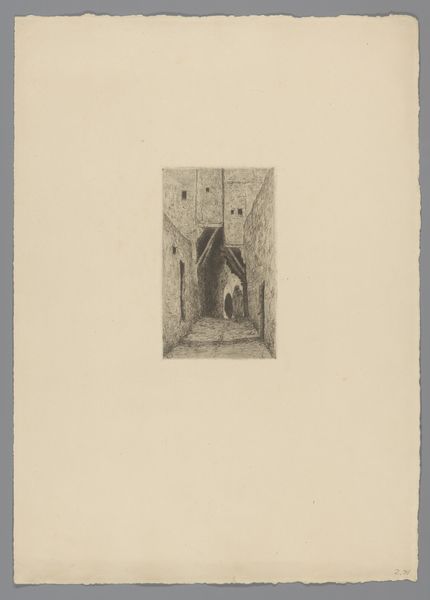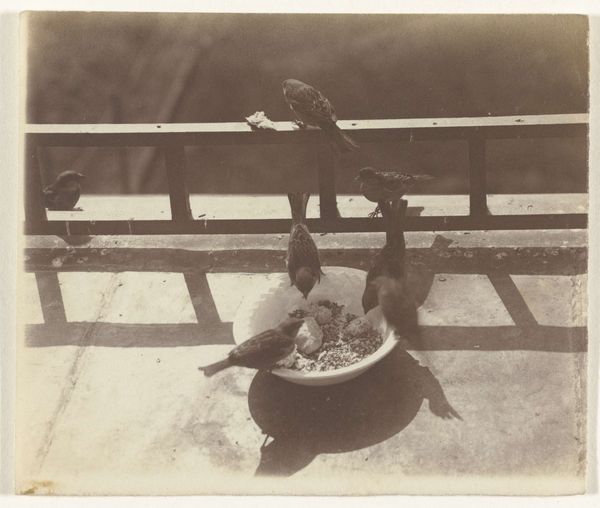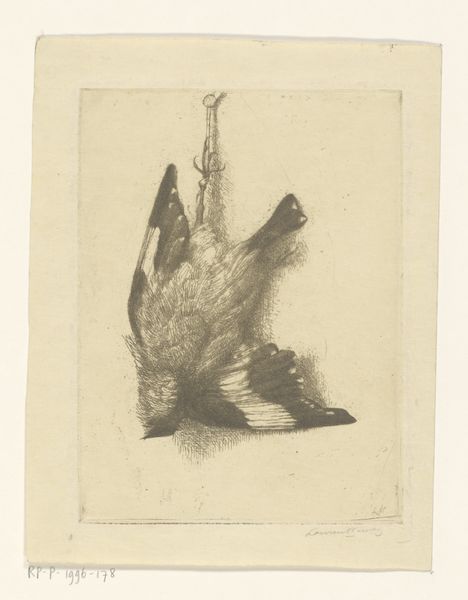
photography, gelatin-silver-print
#
portrait
#
negative space
#
animal
#
pictorialism
#
landscape
#
photography
#
gelatin-silver-print
#
realism
Dimensions: height 95 mm, width 122 mm
Copyright: Rijks Museum: Open Domain
Editor: This photograph, "Huismus voor zijn nest in een luchtkoker" by Richard Tepe, was taken sometime between 1900 and 1930, using a gelatin-silver print. The bird's dark silhouette against the blank wall has such a striking effect. How would you interpret the choices in composition here? Curator: From a formalist perspective, one notes immediately the stark contrast – the light wall emphasizing the bird's dark form and the dark void of its nest. The picture plane is neatly divided with a horizontal band. This compositional balance is key to understanding Tepe's intention. Observe how the textures interact – the roughness of the wall juxtaposed against the bird's delicate feathers. Do you perceive the formal qualities contributing to a symbolic narrative? Editor: I hadn’t considered the textures specifically. Is the framing, which focuses on this tight interaction, important to note? Curator: Precisely. By isolating this detail, Tepe compels us to examine the formal relationships at play – light and shadow, texture and line. The negative space surrounding the bird accentuates its form and placement within the architectural structure. What thoughts about photographic art does this bring to mind? Editor: I see it as a study of contrasts – the organic versus the geometric, nature against architecture. I find the formal reduction quite modern for its time. Curator: A valuable insight. The reduction and emphasis on formal elements moves the piece beyond a mere representational image. Tepe’s choice to emphasize these inherent artistic qualities allows the work to be appreciated primarily as a composition. Editor: Thinking about how the eye is guided, I agree; the stark elements truly bring forth those shapes and textures, more so than the representation of a bird in its nest. Curator: Exactly, by examining Tepe’s compositional and textural choices, the photograph can be better understood as a play of forms. Editor: I appreciate that emphasis on looking at the structure of a work; that’s something I'll carry with me moving forward.
Comments
No comments
Be the first to comment and join the conversation on the ultimate creative platform.

